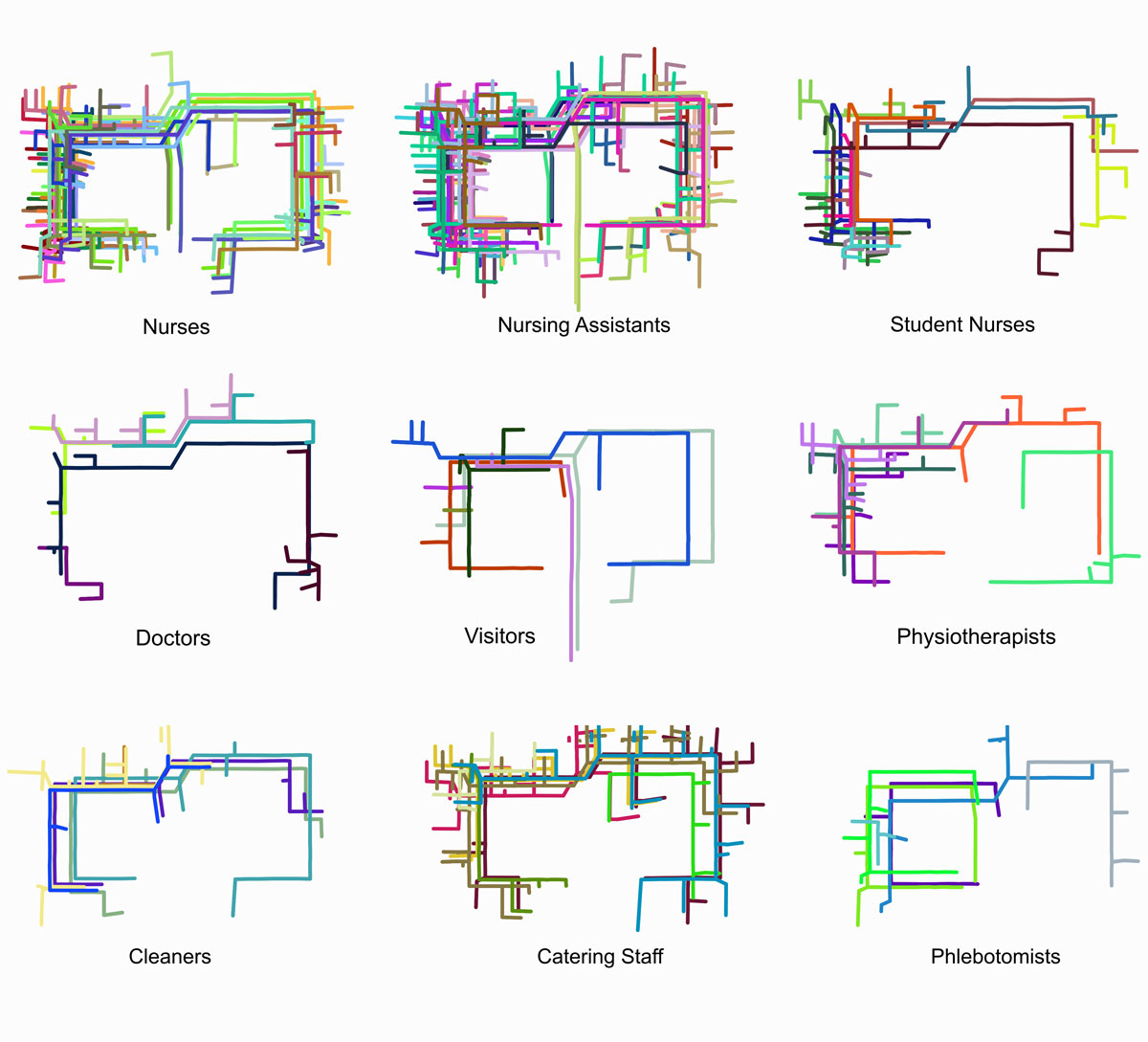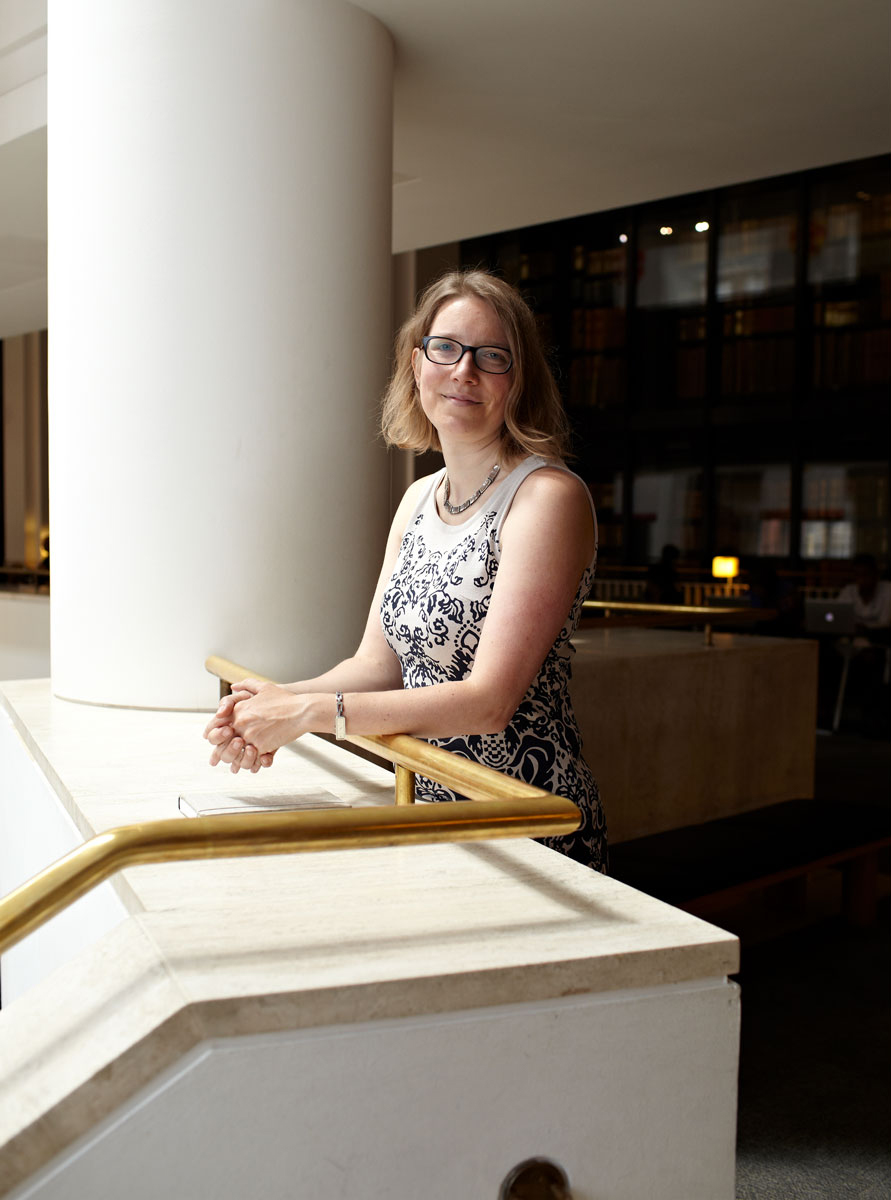Dr Kerstin Sailer explains how the design decisions of architects have an impact on people’s behaviour within buildings – and why understanding this is important.

An image from Sailer's project 'Paths of pathogens' on antimicrobial resistance, showing the paths taken by people in different roles on a University College London Hospital (UCLH) ward. Credit: Kerstin Sailer
A Reader in Social and Spatial Networks at The Bartlett’s Space Syntax Laboratory, Sailer is driven by idea that the design decisions of architects can have an impact on how people move and behave – and research can lead to buildings that are designed to be more human-centred.
She points to the British Library – designed by MJ Long and her husband, Colin St John Wilson – as being all about human scale. “It’s a fascinating building because five thousand people go through it every day, but you never feel you’re a battery hen in there. Each person finds their little space, where they feel at home.”
Studying how people use office space
How people use office spaces is Sailer’s forte. Her most influential paper on the subject is Social Networks and Spatial Configuration – How office layouts drive social interaction. Since its publication in 2012, it has had over 100 citations.
One intriguing insight in the paper focuses on the meaning of distance. “People perceive other people based on the same long corridor to be relatively close,” she explains. “Whereas if they had to take multiple turns to cover the same distance, people wouldn’t interact so frequently. That impacts on how you mitigate those distances.”
Her impact in the real world includes a long-standing collaboration with architecture practice Spacelab, which use evidence-based design and research insights in their workplace studies. The practice recently revamped fashion retailer Boden’s HQ in west London.
Some of Sailer’s research in this area suggests that smaller open-plan offices are more preferable than larger ones, because they’re easier for people to work in. “There are hints that if you have smaller floorplates, people go out of those floorplates more to meet other people, rather than sticking to those they know best,” she explains. “The bigger the floorplate and the more people you can see, the more likely people are to stick to their own teams. Smaller floorplates have higher satisfaction rates.”

Kerstin Sailer in her favourite building, the British Library on Euston Road, London. Credit: Elaine Perks
Applying the research to healthcare
Now Sailer is applying some of her techniques to another type of workplace: hospitals. She is involved in an Arts and Humanities Research Council-funded project, which aims to tackle antimicrobial resistance, meaning “the world in which antibiotics won’t work anymore”. The research, which she describes as obscure but interesting, hopes to come up with design-led ideas around hygiene and hand-care routines for nurses.
Sailer’s base at the Space Syntax Laboratory is the international centre of the theory and methodology known as ‘space syntax’. The lab studies the effects of spatial design on aspects of social, organisational and economic performance of buildings and urban areas. “We model the impact that spatial structure has on human behaviour,” she explains.
And the benefits of being at The Bartlett? The institution gives her “a lot of freedom to do the things I think are important, a lot of support, fantastic colleagues, and plenty of opportunity to do things in interdisciplinary way”.
Kerstin Sailer is a Professor in the Sociology of Architecture at The Bartlett School of Architecture
 Close
Close




